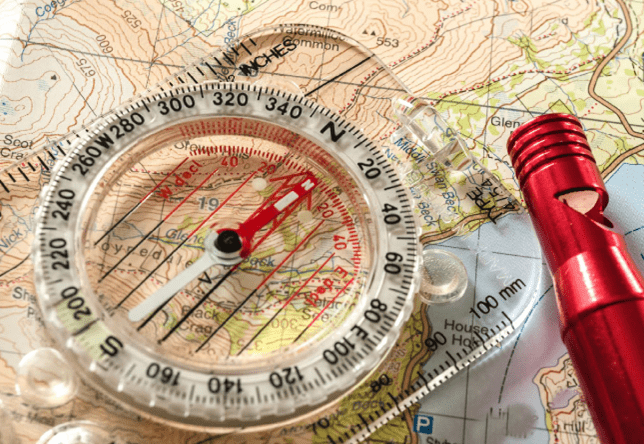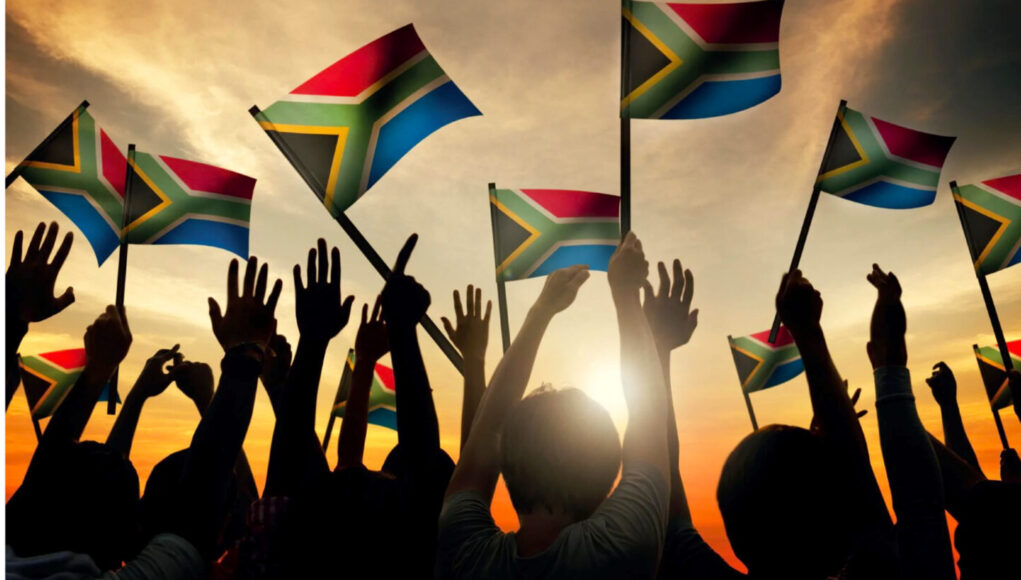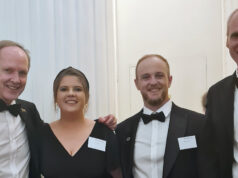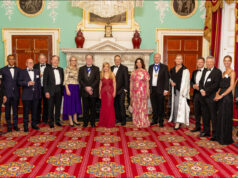By Clem Sunter
An update on the flags, scenarios and probabilities
Given the deep uncertainty of the times we are living in, let me start by briefly describing the methodology I recommend that you should use to plot a way forward. The first step is to identify the flags that are driving change in the world around you. There are cloudy flags with highly uncertain futures ahead of them and clockwork flags ticking away with a more precise impact.
The second step is to look at the possible consequences of the flags by playing different scenarios that could flow out of them. Where possible, you should attach intuitive probabilities to the scenarios based on the current status of the flags.
The third step is to be continually on the alert for new evidence which may require you to adjust your portfolio of flags, and perhaps change the narrative of the scenarios and amend their probabilities. Being a foxy futurist is a dynamic game where you recognise that threats and opportunities can come out of the blue which demand a swift re-think of the picture you have of the future and the appropriate strategy and tactics to handle it.
There are two things you should try to avoid at all costs. Do not let emotion get in the way of the facts. In that sense, the flags can be seen as a way of piercing the veil that we all have when we look at the future. The second thing is to avoid being too precise in your predictions. In the words of Pierre Wack, the greatest scenario planner of all time, it is much better to be vaguely right than precisely wrong.
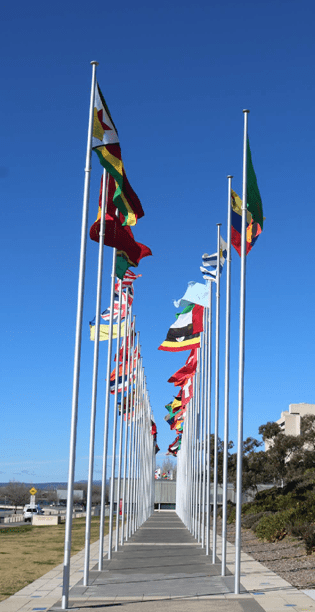
I wrote an article in early July last year around the flags I had picked as the most important to follow for the world at large and for South Africa over the next ten years. I would like to share the update of my thinking on them in the remainder of this article.
The global flags
- Here is what I said in July 2023 about the number one flag I asked people to watch at the time: “The religious flag resulting from the major religions of Christianity, Islam and Judaism competing more intensely with one another. This flag led to 9/11 in September 2001 and is now focused on the current unrest in Israel and the likelihood of Iran developing a nuclear bomb.” Tragically, with the brutal attack by Hamas on Israel on 7th October last year, this flag has developed into a full-scale war with many regional spillovers. Nobody knows how it will end or what the chances of a long-term peaceful settlement are. It is a very cloudy flag. Importantly, it is unclear when the lives of ordinary Israelis and Palestinians will return to some degree of normality so that they can work productively alongside each other.
- The leadership flag measuring the quality of world leaders, and whether their relationship is positive or negative with one another, can only be described as thoroughly uninspiring at the moment. There is no hint of any negotiation between them to eliminate the risk of our divided world descending into another world war. Nor are we seeing the level of co-operation required to halt climate change. All in all, this flag may only turn positive when a new generation of younger world leaders take over from the current lot. It
unfortunately remains terribly cloudy because we do not as yet have any clue as to who the next leaders in the world will be and whether they will get along with one another. Trump possibly replacing Biden as the next US President – providing he can dodge all the legal cases against him – will not help matters at all.
- The red flag of Russia, China and North Korea. There has been no let-up in the war in Ukraine and it still has the potential to metamorphose into a much bigger confrontation between Russia and America. Taiwan’s newly-elected leader supports independence from China, so tensions will continue to be sky-high around the future status of the island. North Korea meanwhile continues with its ballistic missile tests and incendiary rhetoric against South Korea. All three locations involved in this cloudy flag therefore need to be watched closely because of the massive impact they might have on the future of the territories adjacent to them.
- The grey flag of the ageing of the populations in certain important parts of the world, like Japan, Europe, the UK and now China, is having a profound effect on the world economy. We are moving into a two-speed world where America with its younger and more resilient population is experiencing a strong economic recovery from the recent pandemic, while the greying nations are stuck in a rut of low economic growth. Developing countries with younger populations will also do better but only if they are demonstrating good governance. This clockwork flag will continue to tick away in the future and should be considered as an important factor in deciding where to invest money overseas for decent returns.
- The green flag of climate change has clockwork and cloudy characteristics. On the one hand, we are seeing in many places like California a greater frequency of flooding caused by atmospheric rivers. Clouds simply hold more moisture on account of their extra warmth, which is entirely predictable. On the other hand, nobody really knows how quickly life on this planet will be transformed in the remainder of this century. The annual climate change summits have yet to produce concrete action which will slow the temperature rise. Insurance companies are beginning to refuse to offer cover on houses and contents in certain areas prone to flooding.
- The anti-establishment flag is waving high in many countries because many ordinary citizens are frustrated by their living standards declining at the same time as the super- rich are doubling their wealth every few years. Fanned by social media, their anger is contributing towards the growth of extremist movements and political parties dedicated to upsetting the existing social order. It is a cloudy flag because we could see some very surprising changes to the way democracy operates in the future.
- The porous border flag of an increasing number of undocumented immigrants managing to enter wealthy countries is probably the flag which is exercising the minds of their politicians the most. Whether it is the southern border of the United States where vast fences are being built to discourage people crossing the Rio Grande, or the English Channel where the UK government is proposing to relocate many of the people who arrive in small boats to Rwanda, the issue is a front-page story virtually every day. It is a cloudy flag because climate change could boost the numbers trying to migrate in order to stay alive into the billions. What happens then?
- The national debt flag has been soaring around the world as a result of easy money policies since the financial crash of 2008 and due to the mitigation measures taken by governments to ease people’s lives during the pandemic. For example, the national debt right now in the US is about $34 trillion compared to a national GDP figure of $27 trillion, namely a ratio of 125%. In the last century, it was considered a priority to keep that ratio below 60% and indeed America did just that. Now it is more than double that recognized ceiling. In addition, annual interest rates have risen from virtually zero in the 2010s to 5% today, and the US government is running a sizeable annual budget deficit which only exacerbates the problem. Meanwhile, the US stock markets are at record levels. Hence, a day of reckoning, like what happened when sub-prime mortgages fell out of bed in 2008, may be around the corner.
- The pandemic flag has not gone away. Covid is now called flu and thankfully the latest variants are relatively mild. However, the flag must remain on the radar screen as another virus altogether could appear from nowhere and take the world by storm.
- The crowded space flag of a possible collision between rockets and satellites is increasingly being talked about as many more nations want to enter the space game in one way or another. The suggestion in some quarters is that a whole new set of international laws governing space should be drafted and agreed, but whether this comes about in today’s polarized world is doubtful. Meanwhile, the risks of the global banking and communication systems being accidentally disrupted by fragments arising from a collision in space are growing.
- The artificial intelligence flag is still cloudy as people way up the pros and cons of AI. One new development is that important members of the media and publishing industries want to stop their material being used by AI websites in providing data to customers. It is seen as an infringement of copyright. Nevertheless, the general opinion is that this new technology will revolutionize our lives as much as the invention of the car, radio and television did in the past.
The two mainframe global scenarios flowing out of these flags remain “Friendly Planet” and “Gilded Cage”. In the Friendly Planet scenario, the world is fortunate enough to inherit a new set of leaders who act in unison to resolve the Ukraine and Middle East conflicts. They also co-ordinate their actions to reduce carbon emissions.
By contrast, in the Gilded Cage scenario the two wars go on and on, generating ever more bloodshed and destruction of property. The West retreats into an enclave of its own making and only sallies forth from the cage to fight for their interests where they feel they are being threatened. Nothing is done about climate change while the number of desperate migrants trying to squeeze through the bars of the Western cage goes through the roof.
As I write this article, I believe we are currently heading along the path of the second scenario. The G7 group of nations needs to work alongside the UN, as well as the expanded community of BRICS, to redirect the momentum towards the Friendly Planet scenario. Given a record global population of over eight billion, there has never been a challenge like this one. No Planet B exists.
The South African flags
Against this tough global backdrop, there are five South African flags which I am currently watching:
- The crime and corruption flag where progress is being made to bring criminals to justice but the statistics on murder and other serious crimes are still too ghastly to contemplate. We need more support for our police and we need to reduce the backlog of cases in our courts.
- The quality of infrastructure flag is still disappointing in areas such as electricity supply, railways and ports, education and healthcare. Water must now be added to the list as farmers are getting worried that we are not doing enough to cater for irrigation requirements that are expanding every year. Maintaining food security should be a top priority and, as I said in July last year, this flag can only be tackled by a proper alliance between the govern- ment and the private sector.
- The entrepreneurship flag, whereby the majority of new jobs in the future come from small business deve- lopment, is still sadly being ignored. Equally, the negative flag of talented young people emigrating from this country in search of greener pastures elsewhere reduces the long-term chances of South Africa becoming a winning nation.
- The 2024 election flag remains seriously cloudy as recent polls differ quite significantly in the share of votes each party is projected to receive. Never- theless, there is general agreement that the results could be much closer than in previous general elections, which may necessitate some form of coalition between the ANC and a leading minority party in order to form the next govern- ment. This is indeed a watershed moment for South Africa.
- The neutrality flag, whereby the country tries to steer a middle path in order to keep its relationships with its main trading partners intact, is under considerable strain. The reason is that the genocide case brought by South Africa against Israel at The International Court of Justice has been applauded and condemned by the international community, depending on which side each nation and individual citizen is on. However, if a ceasefire takes place sooner than anticipated and Gaza residents have improved access to humanitarian aid, we may avoid serious repercussions to our trading status.
The two mainframe South African scenarios that flow out of these flags remain “People’s Economy” and “Cautionary Tale”. Whereas we were at a political crossroads in the early 1990s when the leadership flag comprising Mandela and De Klerk handed us a peaceful transition to a new Constitution and fully democratic elections, we are now at the economic crossroads for South Africa. Either we build a new economy in which everyone can participate in one way or another as contained in the People’s Economy scenario; or the Cautionary Tale scenario beckons where we are in the dangerous situation of losing all our political gains as internal conflict turns this country into a Failed State. Hence, the kind of leadership necessary to steer this country towards a successful inclusive economy has to emerge from government and the private sector soon after the 2024 election is over. This is a pivotal moment in the history of the new South Africa, where probabilities of success or failure can change vastly in a short period of time depending on the actions taken.
